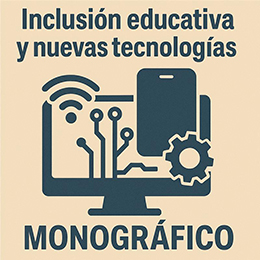Mobile application for the surveillance procedure in the collection of students from the John Paul II School of Copacabana
DOI:
https://doi.org/10.51302/tce.2022.604Keywords:
computer applications, data analysis, mobile phones, technology, student, family, security measuresAbstract
The insecurity that is experienced on a daily basis makes it necessary to strengthen the safety of people who enter their workplaces or schools. For this reason, the objective of this research study is to incorporate the use of a mobile application that helps parents and teachers (men and women) to have control over primary school students that are picked up at the time of class departure. For this, a quantitative-applied study was used, with a pre-experimental design, from a sample of 60 first and junior year primary school students who participated in the study with permission from their parents and school staff. The results showed that the first hypothesis was achieved through notifications sent by the application to warn that the departure time of the students was approaching, thus making an authorization or disposition. And continuing with the last hypothesis, an improvement was obtained from which the people who came to pick up the students were identified, moment in which security protocols are carried out that help safeguard the integrity of the students.
Downloads
References
Arno, H. (2020). Progressive web apps: are they market ready? Total Retail, 1(1), 17. https://www.mytotalretail.com/article/progressive-web-apps-are-they-market-ready/
Babilón Gallegos, L. M. y Zamorano Carrera, C. G. (2017). Diseño de un aplicativo móvil para el seguimiento del cuidado y desarrollo de los niños en una guardería (Tesis para optar al título profesional de Ingeniero de Computación y Sistemas, Facultad de Ingeniería y Arquitectura, Escuela Profesional de Ingeniería de Computación y Sistemas, Lima, Perú). http://repositorio.usmp.edu.pe/handle/20.500.12727/2440?locale-attribute=de
Cevallos Torres, L., Guijarro Rodríguez, A. y López Domínguez Rivas, L. (2016). Factores que inciden en el mal uso de la información en trabajos de investigación científica. Didasc@lia: Didáctica y Educación, 7(4), 57-74. https://dialnet.unirioja.es/servlet/autor?codigo=4585776
Corral, Y., Corral, I. y Franco Corral, A. (2015). Procedimientos de muestreo, Revista Ciencias de la Educación, 26(46), 151-167. https://dialnet.unirioja.es/servlet/articulo?codigo=7472483
Cuevas-Calderón, E. A. (2018). Reconfiguración social: entre la migración y la percepción inseguridad en Lima, Perú. Urvio, 23(73-90), 1-19. https://revistas.flacsoandes.edu.ec/urvio/article/view/3553
Jaewon, O., Woo Hyun, A. y Taegong, K. (2017). MVC Architecture-aware restructuring of web apps. Journal of the Korea Institute of Information and Communication Engineering, 21(11), 2.153-2.166.
Kumari, P. y Nandal, R. (2017). A Research paper onwebsite development optimization using Xampp/PHP. International Journal of Advanced Research in Computer Science, 8(5), 1.231-1.235. http://www.ijarcs.info/index.php/Ijarcs/article/view/3792
Lara Pilco, I. M. y Cruz Ulloa, C. M. (2018). Uso de lenguaje PHP y base de datos MY SQL para la creación de un portal web que permita optimizar el control académico en instituciones educativas. Revista Atlante, 3(36). https://www.eumed.net/rev/atlante/2018/09/creacion-portal-web.html
Lauinger, T., Chaabane, A. y Wilson, C. B. (2018). Thou shalt not depend on me. Communications of the ACM, 61(6), pp. 41-47. https://doi.org/10.1145/3190562
Levenson, H. (2017). Mobile app analytics: where it’s been and where it's going. EContent, 40(5), 14-25. https://link.gale.com/apps/doc/A506604416/PPPM?u=univcv&sid=PPPM&xid=01af18d7
Mararé Vivas, M., Gil Gómez, J., Chiva Bartoll, O. y Moliner Miravet, L. (2017). Validación de una ficha de observación para el análisis de habilidades socioemocionales en Educación Física. Retos: Nuevas Tendencias en Educación Física, Deporte y Recreación, 1(31), 8-13. https://dialnet.unirioja.es/servlet/articulo?codigo=5841334
Morejón Rivera, R., Cámara, F. A., Jiménez, D. E. y Díaz, S. H. (2016). SISDAM: aplicación web para el procesamiento de datos según un diseño aumentado modificado. Cultivos Tropicales, 37(3), 153-164. http://scielo.sld.cu/scielo.php?script=sci_arttext&pid=S0258-59362016000300017
Muñoz Rocha, C. (2015). Metodología de la investigación. Oxford University Press. https://books.google.com.pe/books?id=DflcDwAAQBAJ&lpg=PP1&dq=metodologia%20de%20la%20investigacion%20cientifica&pg=PT5#v=snippet&q=aplicada&f=false
Otzen, T., y Manterola, C. (2017). Técnicas de muestreo sobre una población a estudio. International Journal of Morphology, 35(1), 227-232. http://dx.doi.org/10.4067/S0717-95022017000100037
Santacruz Espinoza, A. (2018). La estrategia del debate en el fortalecimiento de la conciencia ambiental. Investigación Valdizana, 12(4), 177-183. https://www.scielo.cl/scielo.php?script=sci_arttext&pid=S0717-95022017000100037
Urrutia Egaña, M., Barrios Araya, S., Gutiérrez Núñez, M. y Mayorga Camus, M. (2014). Métodos óptimos para determinar validez de contenido. Educación Médica Superior, 28(3), 547-558. https://www.medigraphic.com/cgi-bin/new/resumen.cgi?IDARTICULO=58143
Downloads
Published
How to Cite
Issue
Section
License
Copyright (c) 2022 Jose Jesus Huaman Espinoza

This work is licensed under a Creative Commons Attribution-NonCommercial-NoDerivatives 4.0 International License.


























